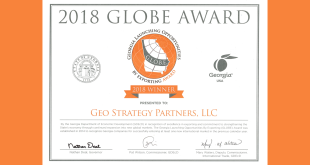In discussing mergers and acquisitions, it is first important to make the point than an acquisition is a tactic not a strategy. An acquisition may be the ideal tactic to help achieve a strategic goal, but the strategy must drive the acquisition; not the other way around. This is a simple but fundamental point that often gets lost in the fever and fervor of an M&A transaction.
Assuming that an acquisition is a desired tactic to achieve a strategic objective, a critical element of the process is to assign a value to the target company. Like any other asset, the value of a company is ultimately what the buyer is willing to pay and the seller is willing to accept. However, when we are considering the purchase of a private company, there are few market transactions to determine where supply and demand meet. In this case value must be inferred from analysis.
This is where company valuation gets murky. Investment bankers, business brokers, consultants, intermediaries, CFO’s, and attorneys have all complicated this process by promoting the use of ratios, formulas, and multiples: ( “5 times EBITDA,” for example.) The fact of the matter is, all valuation formula’s or multiples are nothing but short-hand for a real valuation which should be predominately driven by the expected future earnings the company.
The following diagram illustrates the elements that should comprise a sound valuation of a company:
There are three basic methods for valuing a business: the asset method; the market method; and the income method. I suggest that you need all three with emphasis on the income method. Their definitions are helpful to understanding how they help determine value.
The Asset Method: The asset method focuses on determining the net value of a company’s assets. It is by far the most straight forward of methods and is so objective and transparent, even an accountant can embrace it. In short hand, it is the book value of a company: total assets minus total liabilities. While there can be many complicating aspects to determining book value such as depreciation, inventory method, accounting method, tax implications, etc.; book value can almost be lifted off the balance sheet of a company’s financials and should be considered the starting point for valuing a business.
The Market Method: The market method explains what happens with publically traded companies every day. In a competitive and rational market, buyers compete with buyers and sellers compete with sellers until a market price is established that is acceptable to both sides of a transaction. Because private companies are seldom sold, this method is much less reliable for valuation. However, just as a real estate appraiser looks at comparable sales in a neighborhood to establish the value of a house, it is important to look at comparable sales or industry trends in determining the value of a private company. The market method should be viewed as an input used to adjust the company-specific analysis for market and industry trends. For example, when acquisition activity in an industry has heated up, all valuations will need to be inflated somewhat. When the industry is in a slump, they can likewise be discounted.
The Income Method: The income method is by far the best method for valuing a business; however it is also the most difficult and subjective. The formula itself is simple and objective: it is the net present value of future earnings. Net present value is a mathematical equation that applies a discount value to recognize the value of money over time. The discount value is typically arrived at by adding the cost of capital (usually the rate at which money can be borrowed in a safe and secure manner such as LIBOR) plus some form of opportunity cost (this can be derived at by using buyers expected internal rate of return for example) plus a risk factor (premium points for the inherent risk in investing in the company).
Example: Let’s say the company is expected to make a profit or EBITDA (earnings before interest, taxes, depreciation, or amortization) of $500,000 for the next five years. Setting aside earnings beyond five years or salvage value for a moment, that means the company will earn $2.5mm in profit over the next five years. But the time value of money theory says those future earnings are worth something less than $2.5mm today since they will be earned in the future. If we believe we can invest our money elsewhere and be safely guaranteed about an 8% return on capital and then add 2% for the additional risk investing in this company, we can establish a discount rate of 10%. Then we apply a formula: NPV = Rt/(1+i)t where Rt = the net cash flow at time, i = the discount rate; t = the time of the cash flow (5 years). In this case NPV of $500,000 over 5 years would = $1,895,393.38 in today’s money.
What makes this method difficult and even subjective is the underlying assumption is the ability to know what the future earnings will be. This requires a complete and thorough understanding and analysis of the business. One simple approach can be to look at earnings over the previous 3-5 years and project them forward. However, we all know the past does not necessarily predict the future. We also need to understand what the market opportunity and competitive environment will look like in the future. A company’s business and marketing plan must be reviewed including their sales forecast and backlog. This analysis can require extensive research and “marketing due diligence.” There are also internal adjustments that may need to be made to historical earnings. For example, if the owner of the selling company will not be continuing on past the transaction, his or her salary should be added back to increase historical earnings so that they can be “recast” to better represent the new level earnings that would accrue to the buyer.
Pulling it all together:
A sound valuation should take into consideration all three methods. The Asset-based approach is the best place to start. Let’s assume in the above example that the book value of the company was $1.0 million. If we next employ the Income-based method and add the net present value of future earnings, we would have a valuation of $2,895,393. Now we can employ the Market-based approach and actually use some of the formulas or multiples that have been established in the industry as benchmarks to adjust for the state of the market.
Let’s say that in the past year, 20 similar companies have been sold at multiples of 7 times earnings. We can see that $2,985,393 divided by our EBITDA of $500,000 yields a multiple of only 5.79, so we may want to think about paying a premium over our analysis to keep up with the prices being set in the market. Using the multiple alone would suggest a price of $3.5mm, but we have to look deeper into the specifics of our company and the market environment before we can decide how strongly to weight the market-based valuation. Likewise if the average multiple was only 5, we may consider our valuation to be fair or even a little high based on market considerations.
The Eye of the Beholder:
Like any buy-sell transaction, the ultimate value of the company to the buyer is what it is worth to the buyer. In a business merger or acquisition, it is important not only to determine the financial value of a company, but to determine how that value would translate itself to your business if integrated optimally. This requires conducting a thorough analysis of fit, market position, competition, and yes, even that elusive mantra of the investment banker, synergy. Setting aside cultural fit (which can be extremely important) this next step in valuation analysis must take into consideration the net financial and strategic value of the combined entities. From a largely financial point of view, the model above suggests that you start with the financial or market value, add perceived synergies and subtract perceived redundancies. In my next blog, I will address the second pyramid in terms of determining the value of a business to the buyer.
 GeoCache Where you are… Where you need to be… How you get there
GeoCache Where you are… Where you need to be… How you get there






